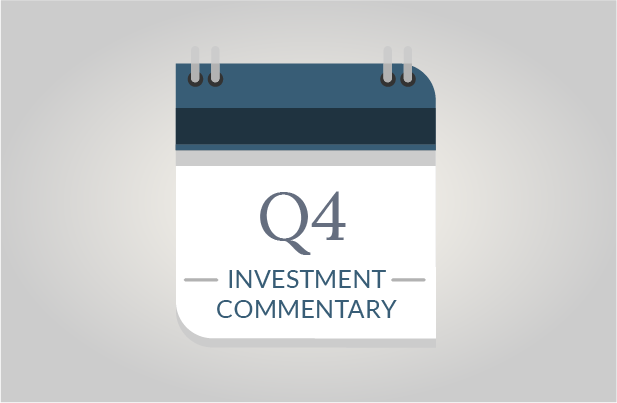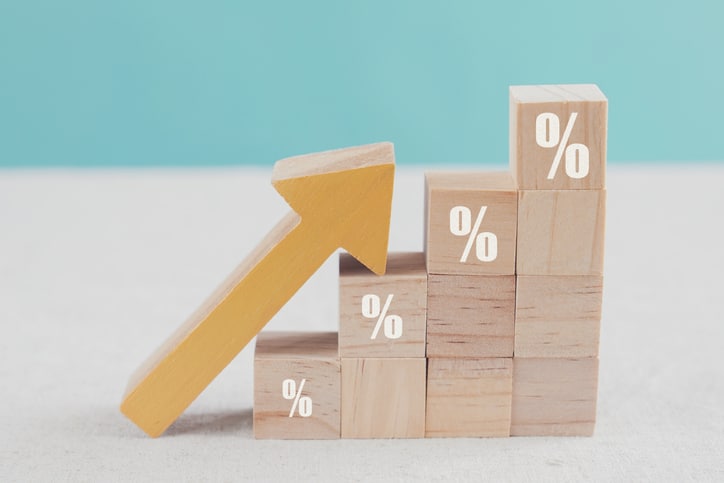- Stock markets rounded out a third consecutive year of impressive gains.
- Inflation reached levels not seen in decades, increasing prices for businesses and consumers.
- The pandemic lingers on, now including the current highly transmissible Omicron variant.
Another Impressive Year for Stocks
The stock markets defied a second year of the pandemic and various other economic headwinds in 2021. Primary U.S. stock indices posted double-digit gains spanning virtually all segments of the market from large to small-cap companies, and across both growth and value-oriented sectors. It was an impressive year!
Looking back further than 2021, stock performance has been stellar for the past three years. The S&P 500 achieved multiple new all-time highs during 2021, ultimately clocking in the third consecutive year of returns in excess of 10%. Such a stretch has only been achieved five times in history dating back to 1928.
With such lofty and extended returns, it’s easy for investors to ratchet up their investment confidence and return expectations. While we certainly hope that strong returns will persist, we do think it’s wise for investors to expect more modest returns on the horizon.
Separately, international returns were positive, but a bit more muted. Bond returns were effectively flat with a small, fractional percentage loss in the Bloomberg Barclays U.S. Aggregate Bond Index.
Stock Exuberance?
The stock markets have certainly benefitted from near zero interest rates in recent years. Investors have flooded money into stocks seeking returns in higher risk assets due to incredibly low rates. The economy faced significant headwinds last year including inflation and supply chain bottlenecks that could have easily derailed stock market growth. Yet, interest rates remained low (albeit rising), which helped to stimulate continued interest in stocks.
The strength of returns in 2021 could easily suggest continued momentum into 2022 as consumer demand remains strong coupled with low interest rates. However, we do believe that potential investor exuberance and escalating stock valuations warrant consideration.
Fortunately, companies have generally been posting impressive earnings and profit margins, helping to support and validate price advancements. That said, price-to-earnings (PE) ratios have been trending high relative to historical averages. PE ratios represent how much an investor is willing to pay for one dollar of a company’s earnings and are commonly used to evaluate if stocks are overpriced or undervalued. While some PE ratios are trending historically high in the range of 30 to 40 times earnings, other PE ratios are off-the-charts. Tesla doesn’t have the highest PE of any company, but it’s well in the hundreds. This is of significance given that it’s one of the top five largest companies in the U.S. measured by market capitalization.
Beyond strong interest in buying traditional established company stocks, investors expanded their risk appetites in 2021. There was significant interest in meme stocks, cryptocurrency, initial public offerings (IPOs) and special purpose acquisition companies (SPACs). SPACs are effectively “blank check” shell corporations designed to acquire private companies. Investment interest in cryptocurrencies and SPACs remain high, despite the fact that these are largely speculative investments potentially facing more stringent regulatory efforts on the horizon.
Recent Federal Reserve Board minutes reflect a strong likelihood of rate increases in 2022, which could weigh on the stock market. That said, interest rates might need to materially increase to make a dent in investor risk appetites. Thus far, rates have remained remarkably low relative to rising inflation.
Inflationary Pressures
Inflation was a key headline (and problem) in 2021, and it’s persisting into 2022. The U.S. consumer price index jumped 6.8% in the 12 months ending November 2021, marking the sharpest increase since 1982. Higher prices for food, goods, services, and materials are having an impact on businesses and consumers alike.
Numerous factors have contributed to rising inflation. Consumer spending skyrocketed across a number of sectors as the world began emerging from the early stages of the pandemic. Demand dramatically increased for housing and technology, but it hasn’t stopped there. Pent-up demand filtered through to virtually every area of the economy, unfortunately at a time when companies weren’t ready for a variety of reasons.
Many companies lowered inventories at the beginning of the pandemic. They also let go of employees to shed costs. It takes time to rebuild inventories and a workforce. This is particularly true when demand increases suddenly and when many people either couldn’t or wouldn’t return to work due to healthcare or childcare reasons.
These challenges rippled to create massive supply chain bottlenecks that persist today, along with an incredibly tight labor market. The results are higher costs in almost every sector of the economy.
Inflation is likely here for some time, at least until supply chains improve, inventories are rebuilt, and more people return to work. Unfortunately, we’re currently (hopefully temporarily) moving further away from these goals due to the highly transmissible Omicron variant circulating the world. High infection rates are causing significant work shortages in every industry.
On a more positive note, it is encouraging that long-term U.S. Treasury rates have remained rather low despite inflation. This suggests that investors aren’t anticipating long-term runaway inflation. The 10-year Treasury yield is currently around 1.7%. This is distinctly higher than rates were in 2020, but still extremely low relative to historical averages.
Other Headwinds
Other than inflation, other headwinds facing the markets include the ensuing pandemic which casts significant uncertainty, a wobbling labor market, massive strains on the health care system, and some companies starting to lose money due to current strains. Internationally, we would also add high energy costs in Europe, and worries from China’s significant crackdown on technology companies and financial challenges facing Evergrande (a significant development company in China).
Anticipated Fed rate increases, while warranted due to inflation, also pose a risk to stocks. The Fed targets achieving an inflation rate of 2%. Inflation moved into the 6% range in 2021, well above the stated target. Yet, the Fed didn’t impose any rate increase, which would have been more common practice historically. Moving into 2022, Fed rate increases are almost certain. Higher rates could suppress interest in stocks. This doesn’t mean that stocks would necessarily lose value, but it could lead to more muted stock returns and perhaps greater volatility on the horizon.
Looking Forward
No one can ever predict the future direction of the markets, and this is particularly the case while uncertainty surrounding the pandemic persists. However, we do think it’s important for investors to keep their long-term investment expectations in check, preparing for more modest or normal returns moving forward. We also think it’s important to ensure you’re holding adequate cash and bond exposure to cover anticipated investment income needs and to buy stocks if they dip. As always, we encourage you to contact us if you have any questions about your investment positioning, or broader finances.
Wishing everyone a happy and healthy 2022!
SageVest Wealth Management




